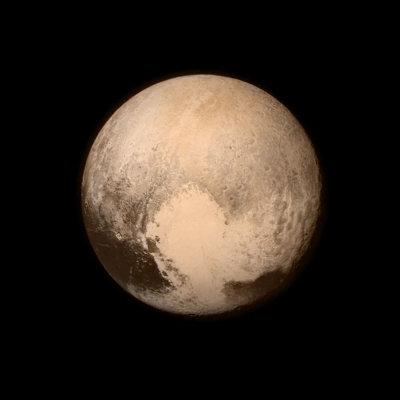
Last year, the world was captivated by photos taken by NASA’s New Horizons spacecraft that revealed a giant heart-shaped region that takes up a large chunk of Pluto’s surface. This region is known as Sputnik Planum, but many simply refer to it as Pluto’s heart. A new study has revealed that it might be ‘beating’ – Pluto’s heart ‘beats’ when warm nitrogen ice rises upwards, spreads along the surface and freezes over Sputnik Planum. This constant ‘beating’ spreads new ice over the region, erasing craters and keeping Pluto’s heart looking fresh and young.
This region stretches 1,200 kms across and is covered in a polygonal pattern, which researchers say is a sign that warmer nitrogen ice may linger under it. Since radioactive materials are constantly churning out heat and, therefore, cooking up nitrogen ice, Pluto’s heart gets covered with new ice roughly every 500,000 to 1 million years, meaning Sputnik Planum looked different many years ago, and will probably look different in the future.
Picture Credit : Google




